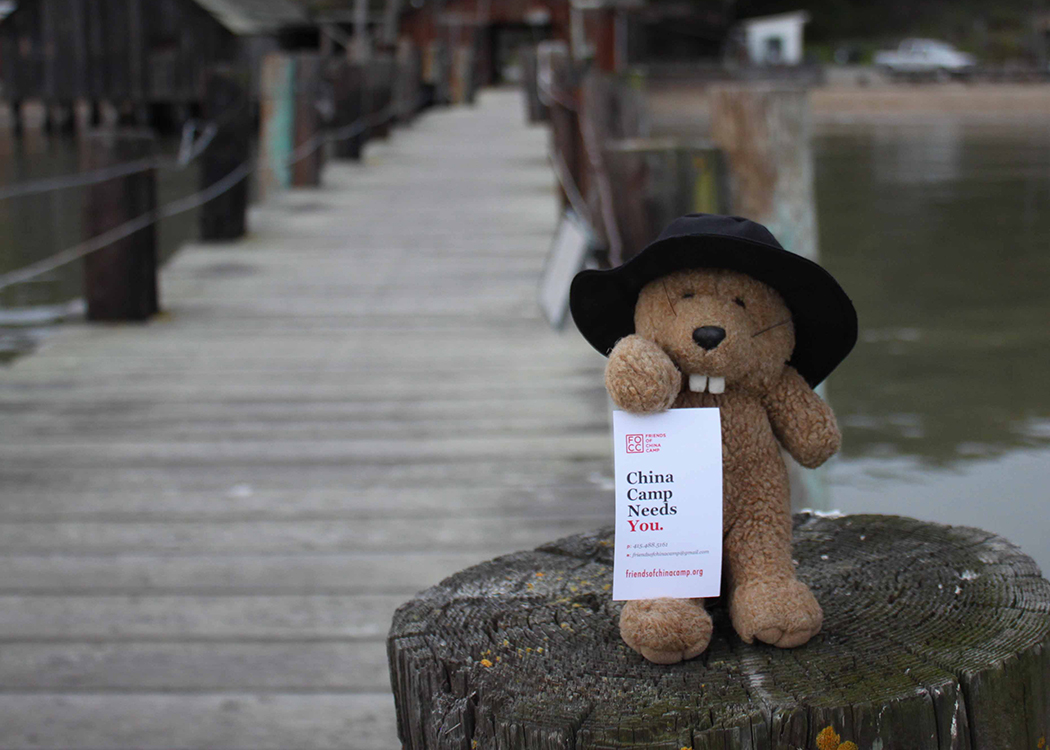 More 2012 Travels |
Glendale → Parks → Sacramento 607 mi (976.9 km) |
 Next Day |
Oh no, everyone!
In my quest to find George, I’ve grown very fond of the Parks and Landmarks I’ve seen, which is why I was shocked to learn that the state government of California has decided to shut down 70 state parks due to budget cuts! That is tragic by itself, but even more so, 15 of these parks contain Historical Landmarks! That means I have to visit them all before they close on July 1st! If George is visiting these sites, maybe he also wants to see them before they’re gone. The hunt is on!
Since so many of these parks are spread across the difficult-to-reach northern areas of the state, I have to divide this quest into three parts: the Northeastern counties (Butte, Nevada, Plumas, and Sacramento), the Northern counties (Shasta, Humboldt, Tehama, and Trinity), and the Northwestern counties (Marin, Napa, Solano, and Sonoma). At the end of each, I plan to bring whatever literature I can find to the State Capitol and show the government that people and beavers still care about history! This President’s Day weekend, I started in the Northwest!
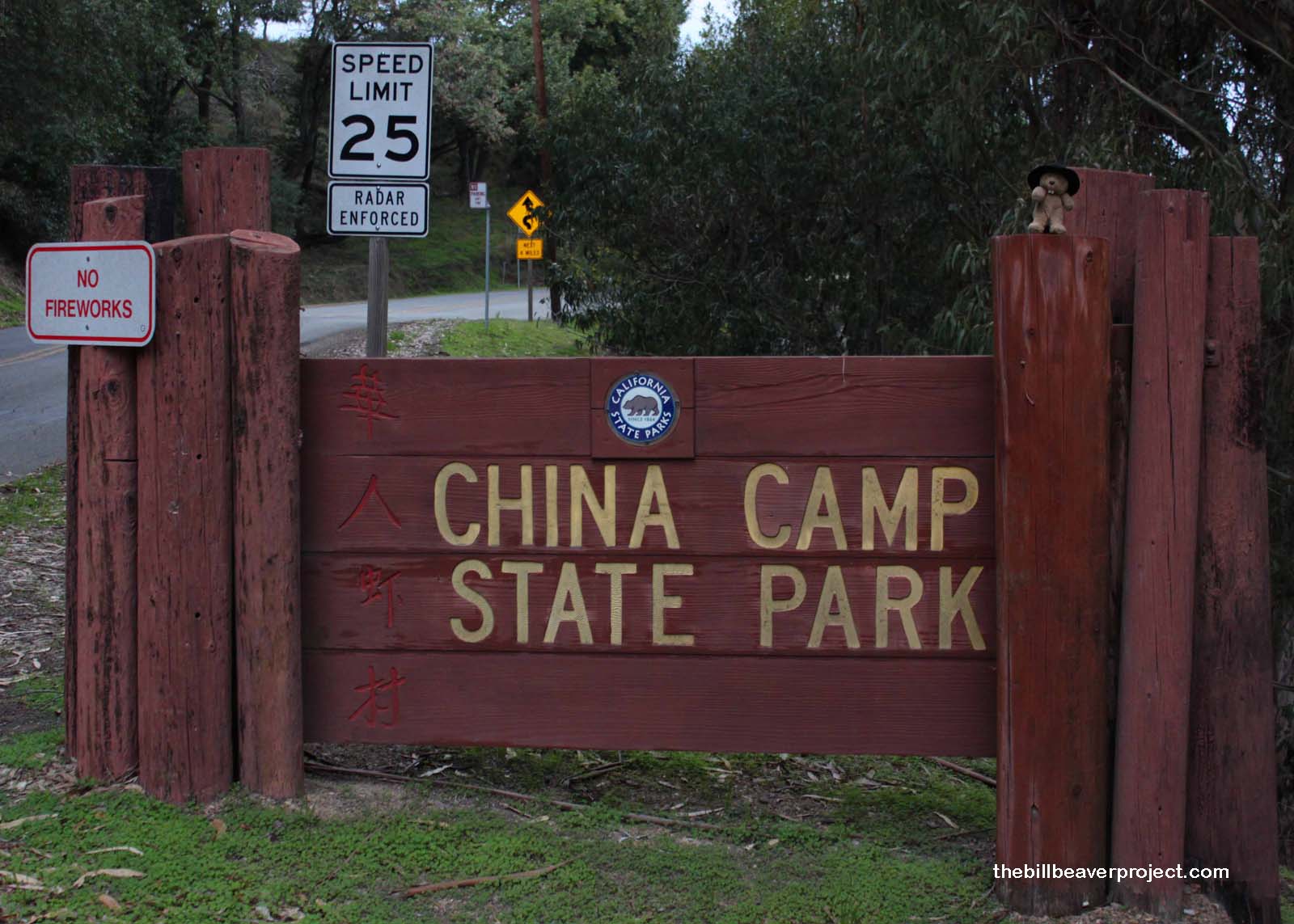 |
I arrived at China Camp State Historic Park in the early hours when the marine layer turned the world silver. The last of the once plentiful Cantonese shrimp fishing villages on the San Francisco Bay, this tiny camp with its characteristic pier and picnic area on a bluff overlooking a tiny island, is simply beautiful.
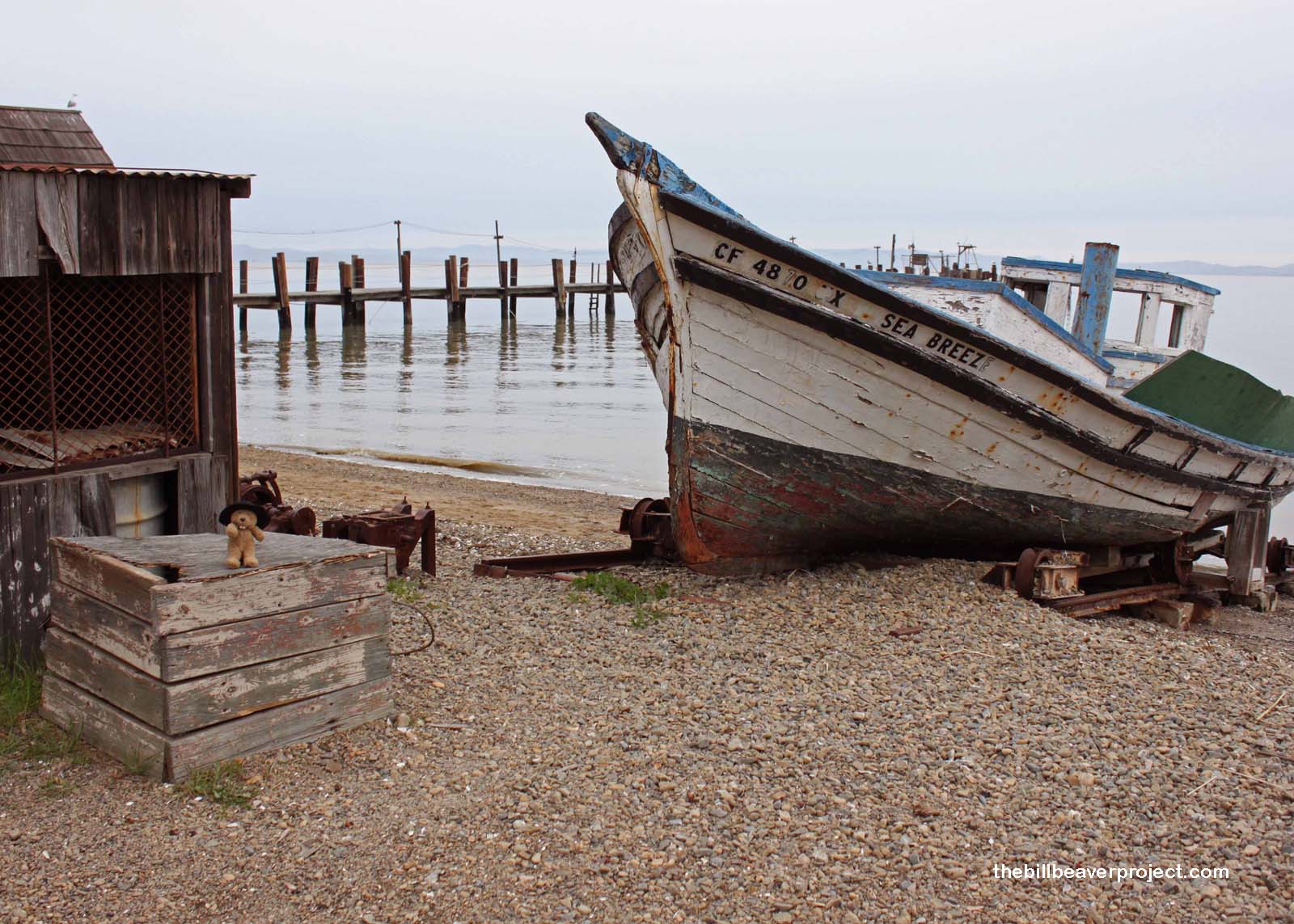 |
At its height in the 1880s, China Camp housed over 400 fisherfolk, who primarily exported their catch to China, since shrimp hadn’t caught on in the American diet just yet. However, once folks in the US realized how tasty shrimp could be, the government placed a ban on Chinese fishing practices, prohibited shrimp fishing during the peak season, and forbade shrimp exports to China. This shut down Chinese camps all across the bay, sparing the single village we now call China Camp.
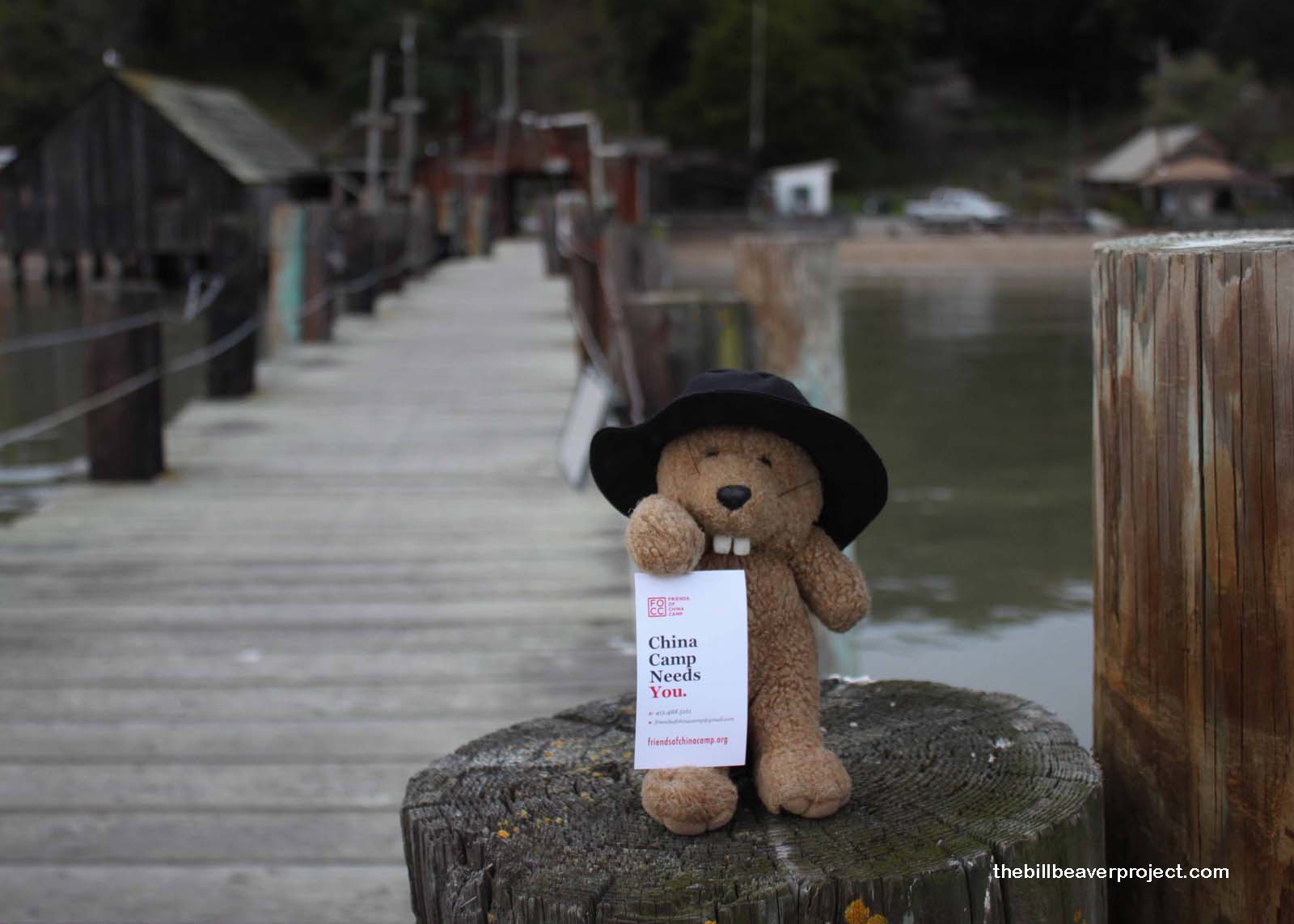 |
I, for one, found it pretty ironic that this pretty little park would be on the list to shut down after so many years of discriminatory legislation! I don’t usually like to get on my soap box, but that makes me mad!
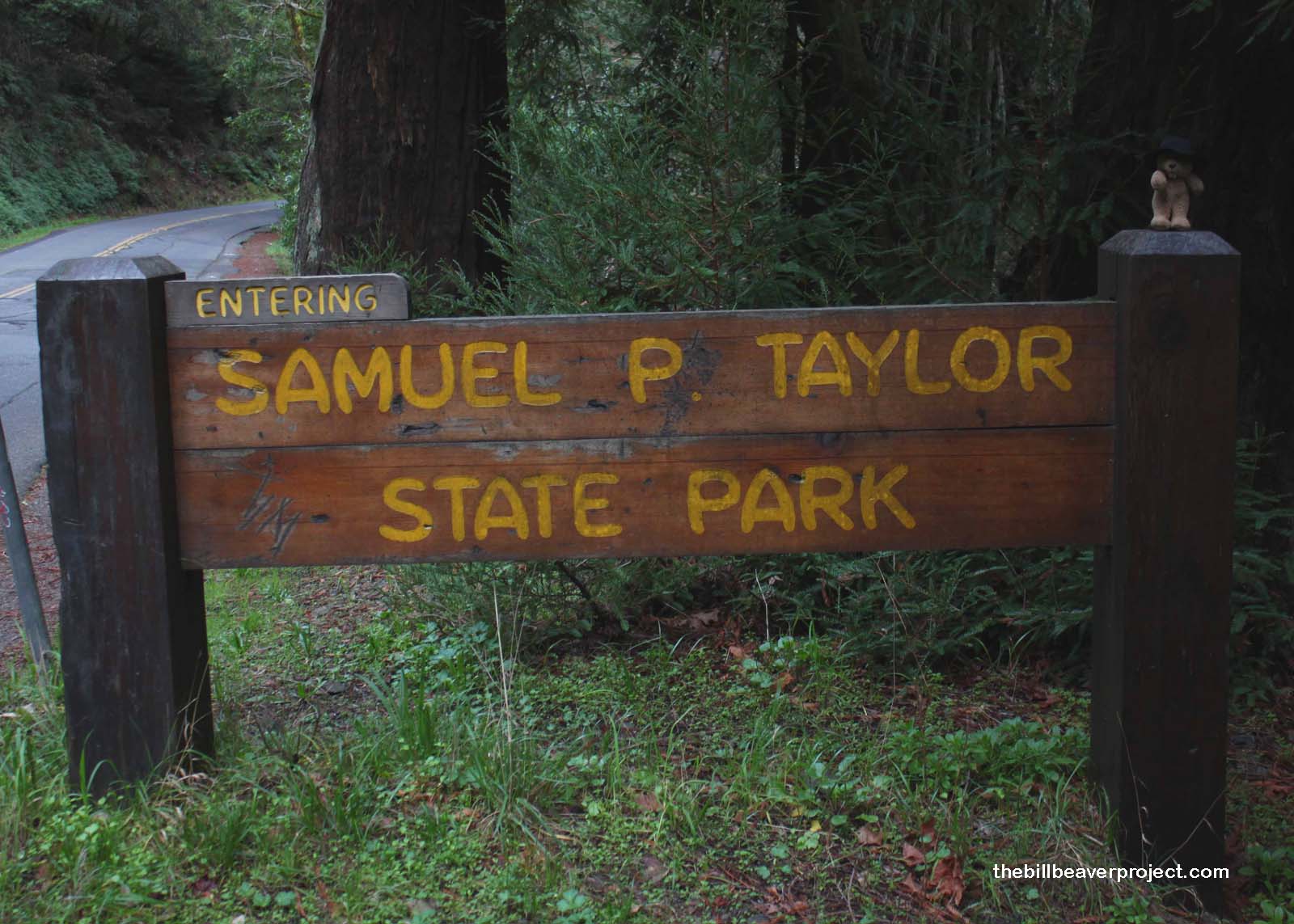 |
Time being of the essence, I headed westward to Samuel P. Taylor State Park, home of the Pioneer Paper Mill, where I got great news from my friend, Mr. Foster, the banana slug! The park, with its towering redwoods and ruins of Mr. Taylor’s paper mill, have been spared by federal assistance, so there may yet be hope for this Historical Landmark!
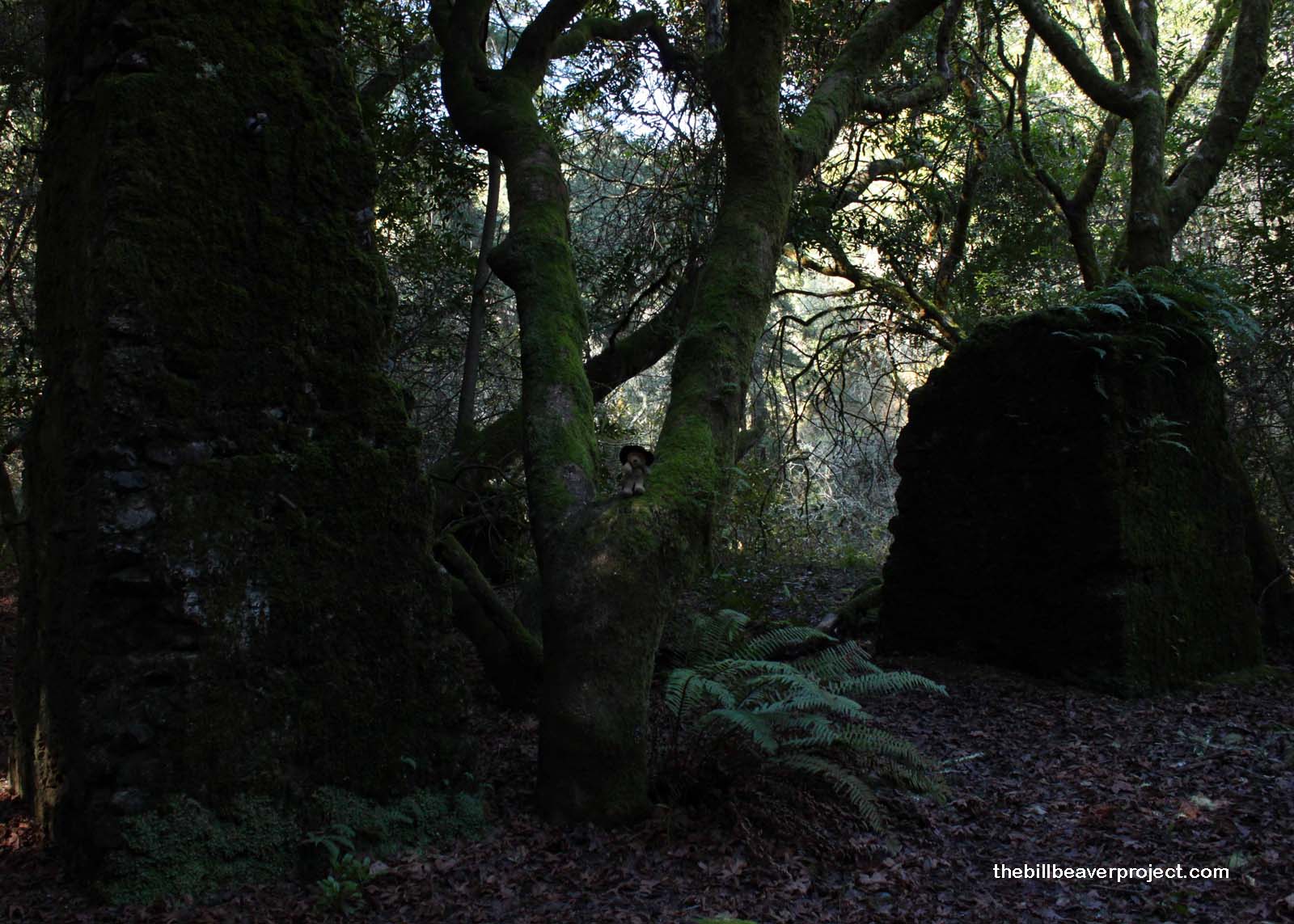 |
While building his paper mill, Mr. Taylor realized that his work was disrupting the riparian journey of the coho salmon, so he invented a salmon ladder to help them out! How great is that?
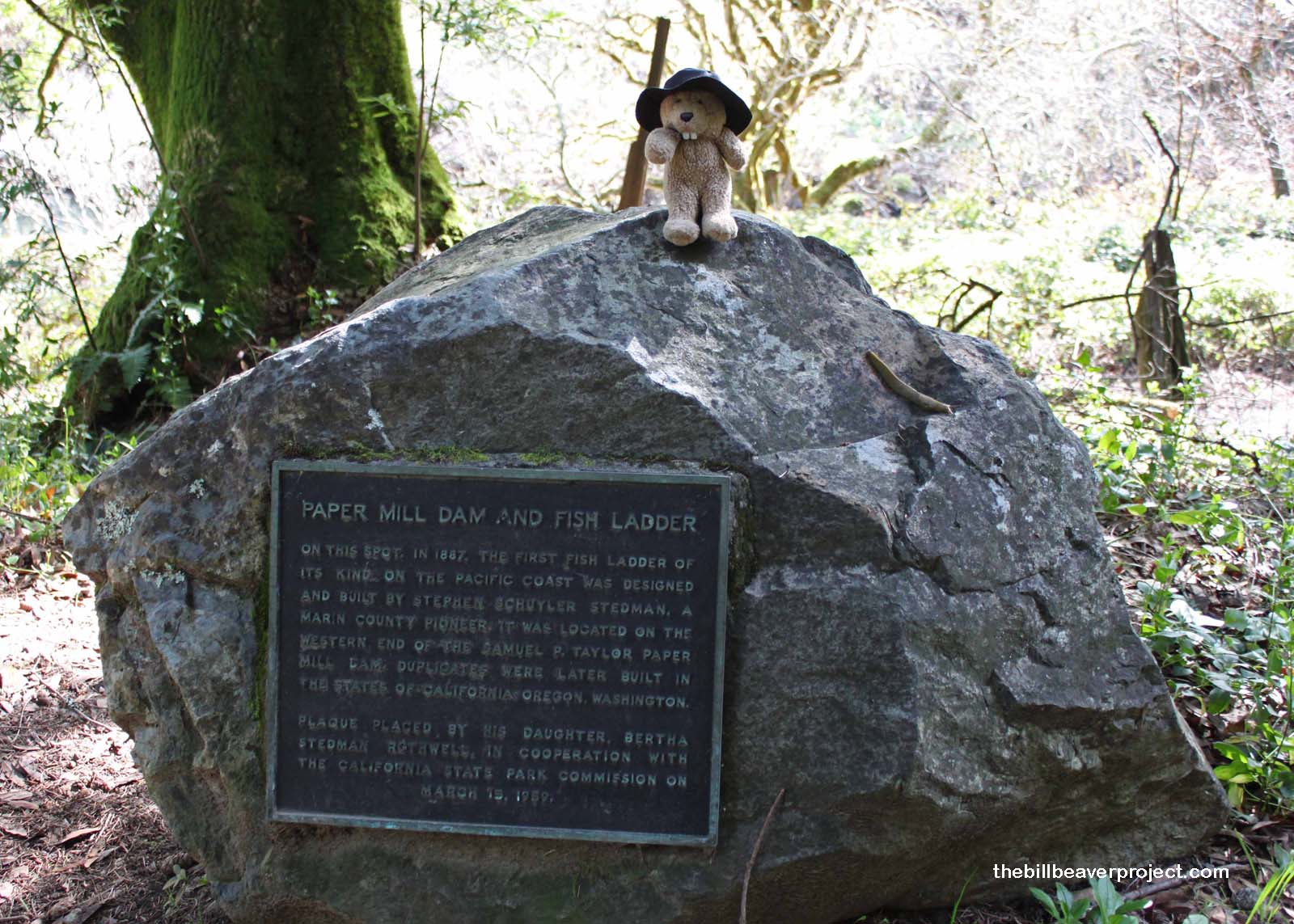 |
I could have spent hours frolicking among the ruins and redwoods with Mr. Foster, among the most down-to-earth fellows I know, but time was short, both for me and the other Landmarks! I turned north through the land of happy cows.
 |
Olompali State Historic Park takes its name from the Miwok term meaning “Southern Village.” No, these are not the Miwoks from the moon of Mendor; the Miwoks were a tribe of coastal Native Americans forced from their ancient home and made to work on Spanish missions, where they learned adobe building techniques. The lone adobe in Olompali, the oldest house north of the San Francisco Bay, belonged to Camilio Ynitia, a Miwok who won back over 8,000 acres of usurped Miwok territory from the governor at the time.
 |
Later proprietors of the park, the Burdell family, saw fit to cover the adobe to keep it from melting in the rain, but now, after hosting many battles and rock stars, this park has been dropped on the financial chopping block! Last year, when I visited Fort Tejon, another vanishing Landmark, a lady told me it would only take three years after the park closed for the buildings to be destroyed by weather and vandals. I wonder how long it will take for the house of Camilio Ynitia to fall. Oh no!
 |
I entered Sonoma County too late to see Petaluma Adobe State Historic Park, which can now only open on Tuesdays and Wednesdays. I thought it was a bit silly for them to sacrifice weekend visitor traffic with funding being so dire, but maybe they get a lot of school field trips. In any case, everything I learned about the Petaluma Adobe, I had to look up. It was founded by Mariano Vallejo in 1836 in an effort by Mexico to build influence near a Russian outpost. It was the largest privately owned adobe in California and part of a 66,000-acre rancho that specialized in trading hides and grains.
Now, it hosts sheep shearing days, living history days, and even a huge Iberian dance called a Fandango! Each of these historic places offers so much that it makes me sad to think that all of them could sport these “Closed” signs, come July 1st. That would cut off access to so much history, so many hiking trails, and so many fun events! I hope something will be done so that I can come back to the Petaluma Adobe some day and dance the Fandango!
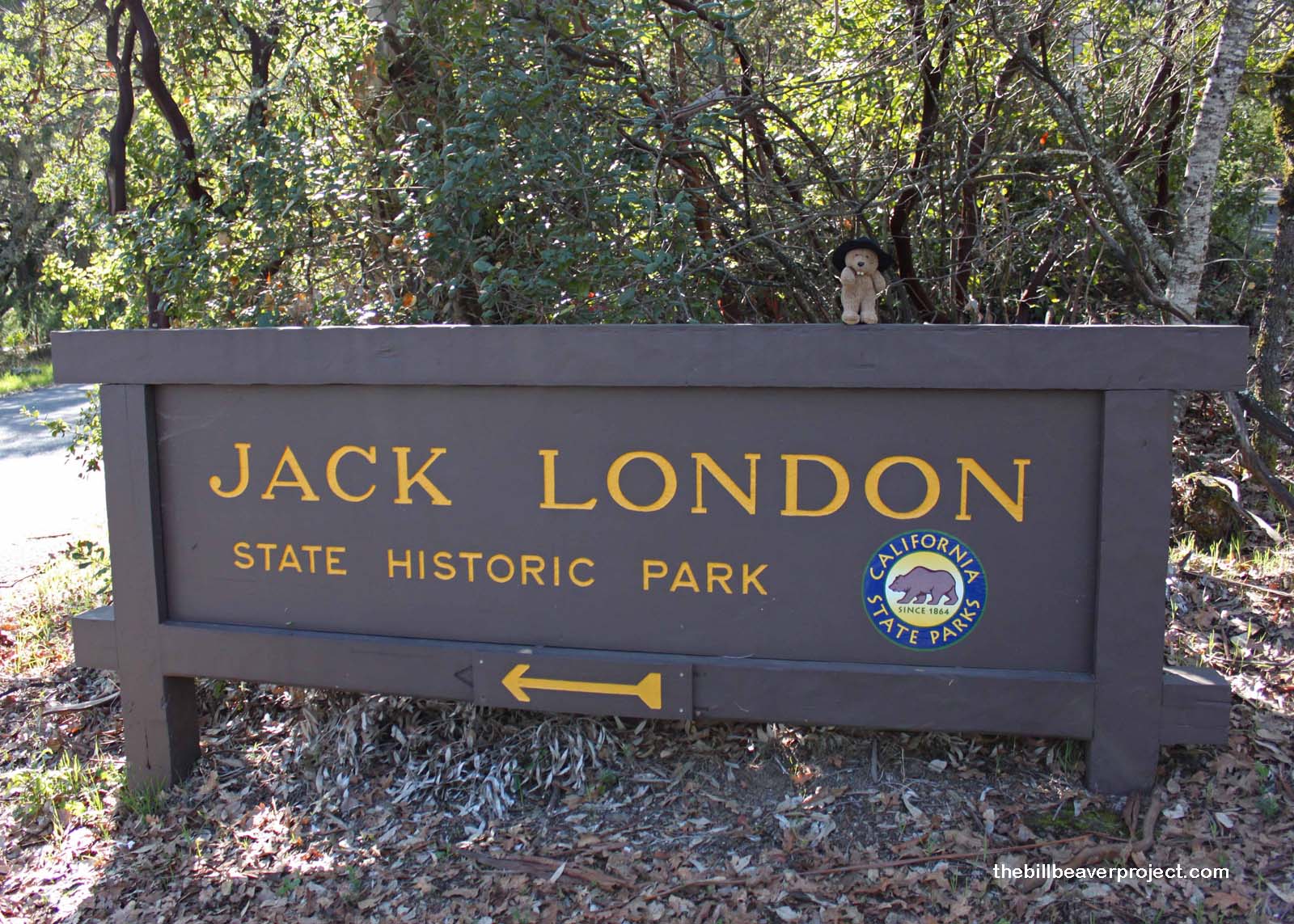 |
With the afternoon wearing on, I careened into Jack London State Historic Park, once home to an adventuring hero of mine, Jack London, author of such thrilling novels as Call of the Wild, White Fang, and The Sea Wolf. Here, his ashes lie under a red boulder near the graves of two pioneer children left behind from years ago.
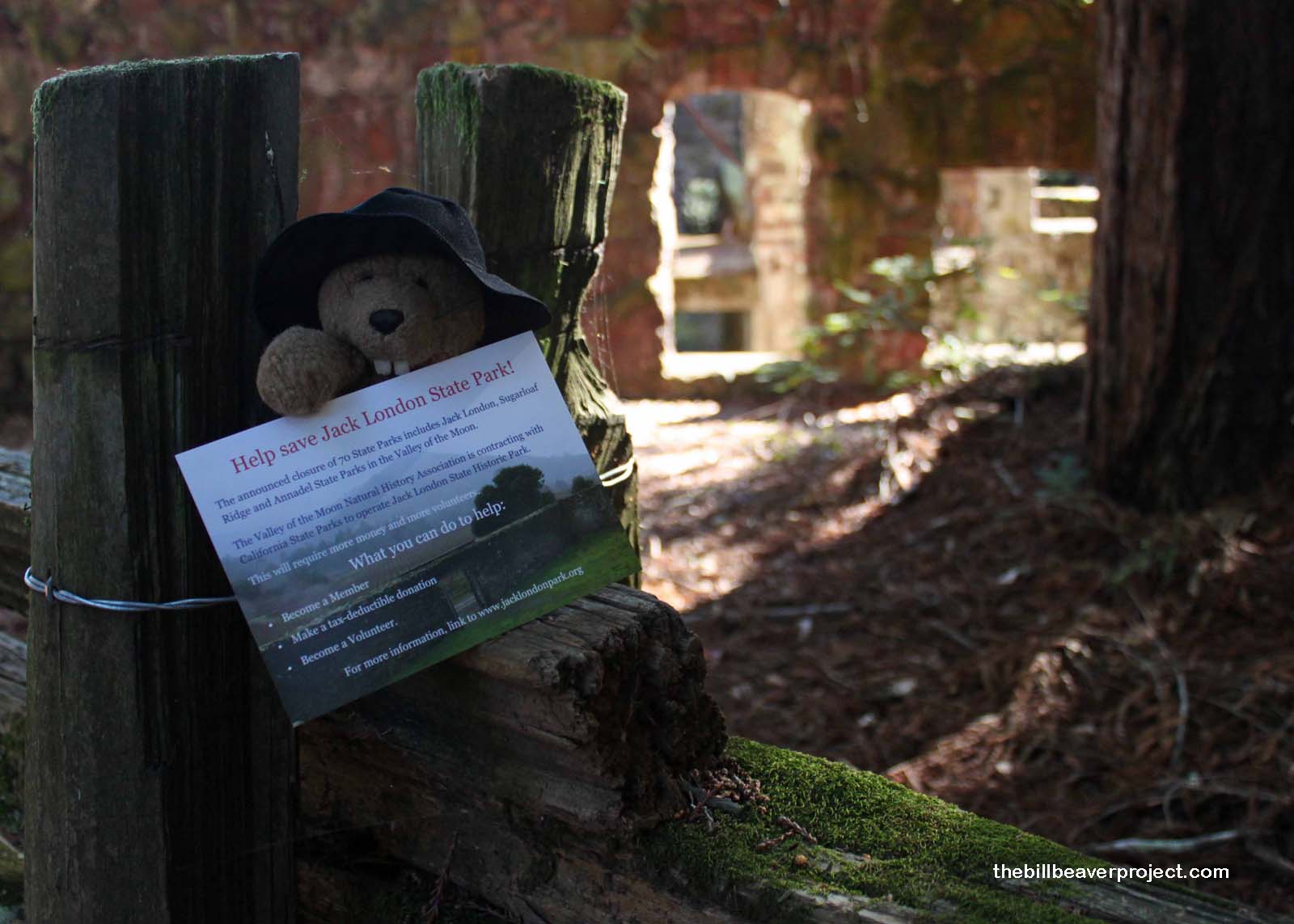 |
Also in ashes is his Wolf House, a spectacular mansion, which burned to the ground shortly before anyone could move in. Though Mr. London vowed to rebuild, his years of adventures and bug bites caught up to him before he could realize his ambition, making true his wish that his “spark should burn out in a brilliant blaze…[rather than]…be stifled by dry-rot.” Why this surprisingly popular park should meet the legislative chopping block is anyone’s guess. It could be that entry payment is based on the honor system or that Mr. London was a vocal Socialist. Either way, I believe this place and its House of Happy Walls should be saved!
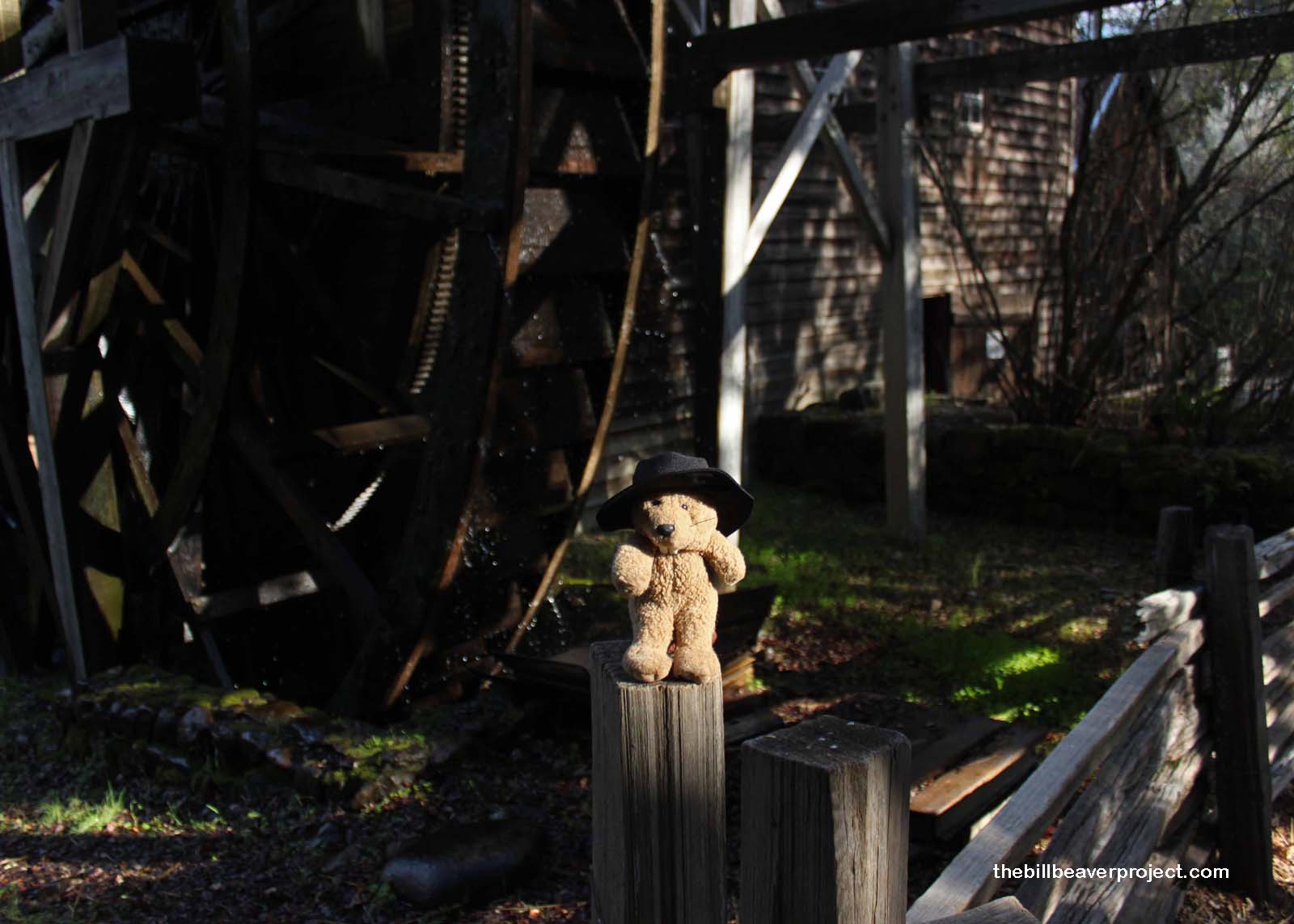 |
After braving the long, winding road into Napa Valley and the heavy traffic along winery row in St. Helena, I arrived at Bale Grist Mill State Historic Park to see the Old Bale Mill, an enormous waterwheel that still operates from 10-4 every Saturday and Sunday, or will until July 1st. It was originally owned by Dr. Edward Bale but didn’t become economically successful until he died and his wife inherited the mill and his debt. The mill is powered by running water, which turns the wheel, which turns several sets of gears, which turns the mill stone and grinds the grain. I learned that the dampness of this stone made the flour particularly tasty, if a bit gritty!
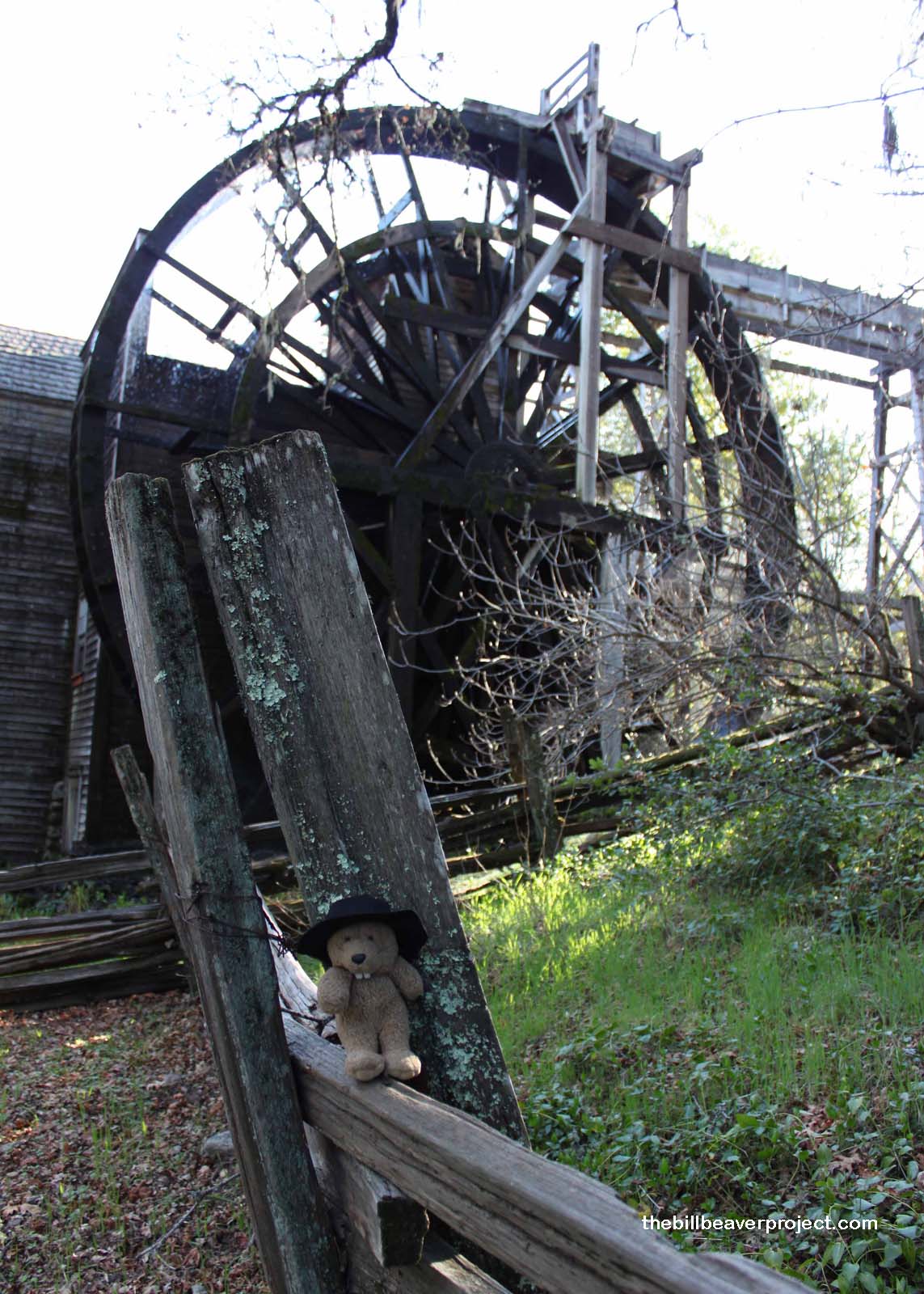 |
It is well worth taking a tour just to see this fairy tale mill house in operation, but you’ll have to hurry if you want to see it before the mill stops spinning!
 |
With dusk fast approaching, I had to make tracks back to the Bay Area to see Benicia Capitol State Historic Park. Did you know that Sacramento wasn’t always the capital of California? It was originally set in Vallejo by Mr. Vallejo, the owner of the Petaluma Adobe, then moved to Benicia during the “Capitol on Wheels” period. I arrived after the park had closed for the day, but I did have time to admire the sunset on the white columns of the exterior. I had to wonder, though, after repeating history by shutting down the Chinese camp, the Miwok adobe, the Socialist author’s ranch, and the mill that was made profitable by a woman, why the state congress would choose to shut down a part of history that applied directly to them. Maybe it’s an attempt at impartiality?
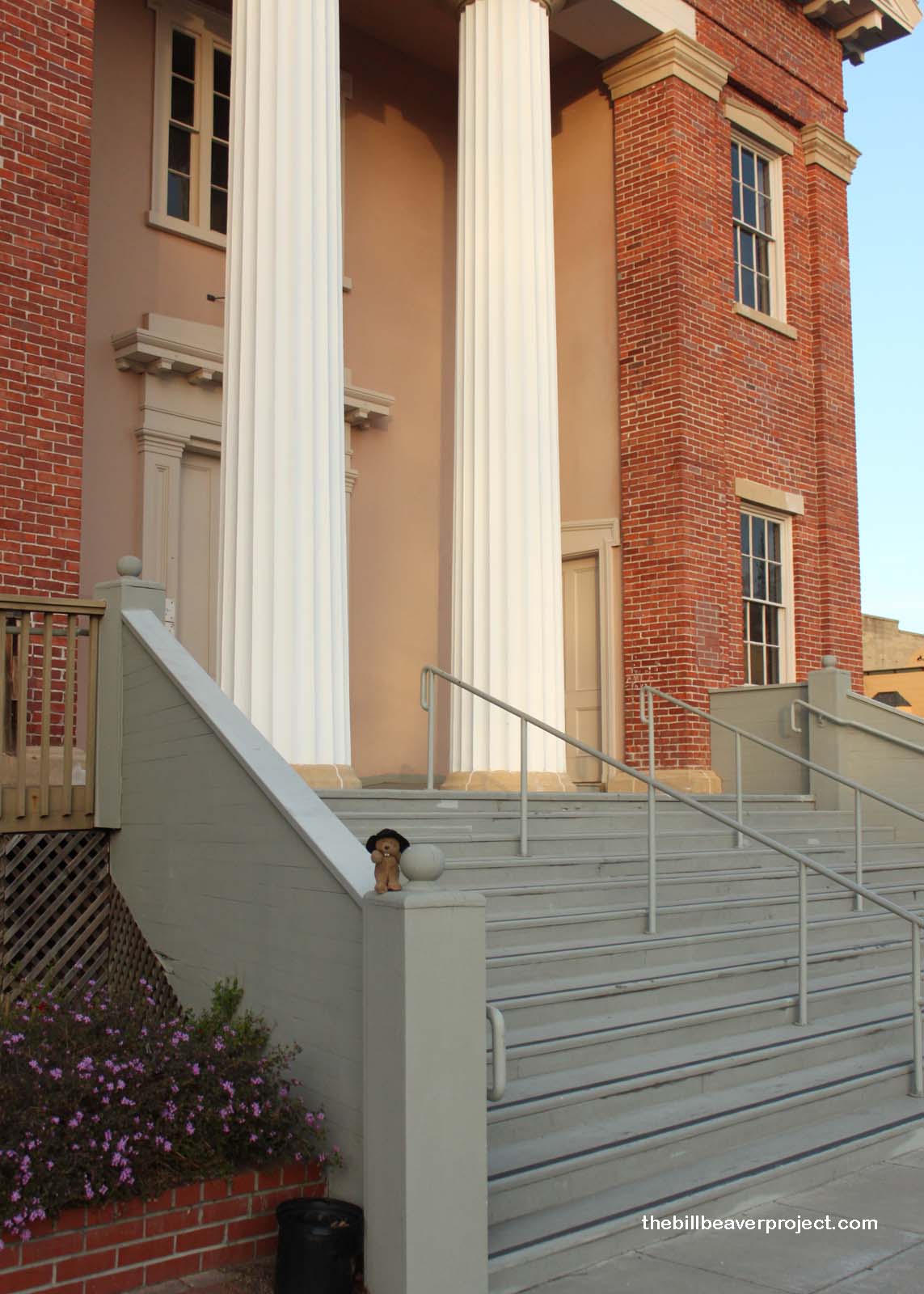 |
Though today was a whirlwind adventure, covering seven vanishing landmarks, I still have one more adventure ahead of me before I can call this mission complete. I need to go from the old Capitol to the new Capitol to find answers and make sure the voice of history is heard!
See you in Sacramento!

 More 2012 Travels |
Total Ground Covered: 607 mi (976.9 km) |
 Next Day |
